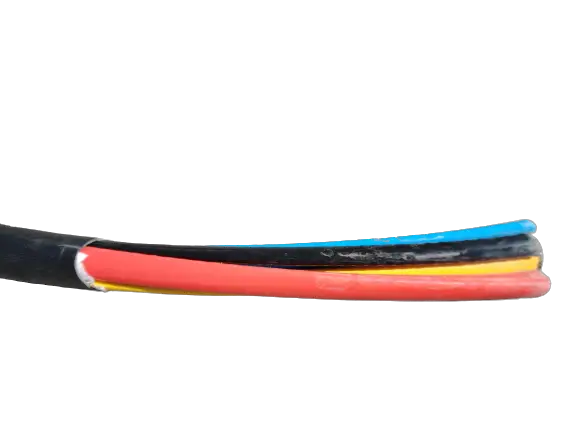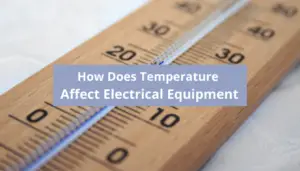To ensure safe operation and work on full load without being damaged cable sizing calculation is very important. It helps us to provide a suitable voltage for the load.
Besides this proper sizing helps us to withstand the worst short circuit current, and ensure device safety during operation.
In this article, we will discuss methodologies and other related parameters regarding cable sizing calculation. And of course, we will give a simple example of choosing a cable.
Table of Contents
Cable Sizing Calculation Steps
The process of the size calculation method consists of six steps.
- Collect data about cable, load, and environmental conditions.
- Determine the minimum cable size for continuous current carrying capacity.
- Determine the minimum size of the cable based on voltage drop.
- Determine the minimum size of cable for short circuit conditions.
- Choosing the minimum size of the cable in case of earth fault loop impedance.
- The final step is to select the minimum size of cable in the previous steps.
Now, let’s discuss each step in detail to find the correct size of the cable.
Example of cable sizing step-by-step
Given Data:
- Load Power: 80 kW
- Distance from Source: 200 meters
- System Voltage: 415V (Three-phase)
- Power Factor (pf): 0.8
- Allowable Voltage Drop: 5%
- Installation Method: Directly buried in the ground
- Burial Depth: 1 meter
- Ground Temperature: 35°C
- Cable Arrangement: One cable per trench
Step 1: Calculate Load Current
Now, let’s proceed with cable selection step-by-step.
Load current I = (Power in watt) / (1.732*V*pf )
= (80*1000) / (1.732*415*0.8)
= 139 A
To better understand The Critical Role of Cable Size in Electrical Efficiency read my in-depth article.
Determine correction factors
From derating factor tables, we find the derating factors of the example conditions.
For more details about derating factors and tables read my article What is derating factors of underground cables?
- A correction factor of ground temperature = 0.89
- A correction factor of soil = 1.05
- A correction factor of cable burial depth = 1.0
Total derating factor = 0.89 * 1.05 * 1.0 = 0.93
From cables ampacity tables. Selecting Copper, XLPE, 3*50+25 mm2 , its current is 185 A, Derating this current 185 * 0.93 = 172 A
Calculating the voltage drop of this cable, VD = 0.715 MV/A/M, from voltage drop tables.
VD = 0.715 *distance*load current = (0.715/1000)*200*139 =19.877 V
The allowable voltage drop = 415 * 5% = 20.75V.
This means that the cable is accepted because the voltage drop is within limits (5% = 20.75 V)
Finally, we can use a line of Copper, XLPE, 3*50+25 mm2 for the load and laying conditions mentioned above.
Read my article Voltage Drop Woes? Here’s How to Choose the Perfect Wire Size
Important notes:

- In this example, we skipped short circuit calculations, as it’s much more complicated and depends on many factors.
- Voltage drop and The current carrying ampacity of the cable which are 0.715 MV/A/M, and 185A.
Conclusion
- Choosing the power cable for electrical loads depends on load current, cable ampacity, installation conditions, etc.
- Derating factors should be applied to the cable current.
- The voltage drop value should be within the accepted limits.
- If the cable voltage drop is higher than the limits, we choose the larger cable.
Why is cable sizing important?
Cable sizing is important for several reasons, primarily related to the safe and efficient operation of electrical and electronic systems. Here are some key reasons why cable sizing is crucial:
- Safety: Properly sized cables ensure that electrical systems operate within their designed parameters. Undersized cables can overheat, potentially leading to electrical fires, damage to equipment, and even electrical shock hazards. Oversized cables, while less likely to overheat, can be cost-effective and take up unnecessary space.
- Voltage Drop: Cables have a certain amount of resistance, and when current flows through them, voltage drop occurs. If cables are undersized, the voltage drop can be excessive, leading to reduced performance and functionality of electrical equipment. Voltage drop can also affect the efficiency of motors and other devices.
- Efficiency: Using appropriately sized cables can improve the overall efficiency of electrical systems. Undersized cables can result in higher energy losses due to increased resistance, while oversized cables may lead to wasted materials and increased installation costs.
- Compliance: Electrical codes and standards require that cables be sized correctly to ensure the safety of occupants and the longevity of electrical systems. Failure to comply with these regulations can result in legal and liability issues.
- Equipment Protection: Properly sized cables help protect electrical equipment from damage. Undersized cables can cause equipment to overheat or fail prematurely, leading to costly repairs or replacements.
- Cost-Effectiveness: Oversizing cables can be expensive in terms of material costs and installation expenses. Proper cable sizing ensures that you use the right amount of materials and do not waste resources.
- Reliability: Correctly sized cables contribute to the reliability of electrical systems. When cables are properly sized, they are less likely to fail or cause interruptions in power supply.
- Load Capacity: The size of the cable determines its load-carrying capacity. By selecting the right cable size, you can ensure that it can handle the current demands of the connected equipment without overheating or failing.
- Environmental Impact: Oversizing cables can lead to unnecessary resource consumption and waste. Proper sizing helps reduce environmental impact by using resources efficiently.
- Future Expansion: Properly sized cables take into account potential future expansions or modifications to the electrical system. This ensures that the system can accommodate additional loads without needing a complete overhaul.
In summary, cable sizing is essential for ensuring the safety, efficiency, and reliability of electrical systems. It helps prevent hazards, reduces energy losses, and ensures compliance with regulations and standards, all of which are crucial in various industries and applications, from residential wiring to industrial and commercial installations.
Don’t Leave Empty-Handed!
Install my Free Android App on Google Play:
Electrical Cables Most Common Tables “Cables Tables”
And, my Electrical Calculations App “Fast Electrical Calculator”
Discover more great content by subscribing to My channel
Looking to stay ahead of the game in the world of electrical engineering? Subscribe to my YouTube channel and gain access to exclusive content you won’t find anywhere else!
The staff I recommend
(Amazon Affiliate Links to products I believe are high quality):
- Economy 120 Volt/60Hz AC Power Source – Step-Down Voltage & Frequency Converters 1800W
- UNI-T Digital Multimeter Tester UT139C
- 50-Amp Extension Cord for RV “100ft”
- Voltage Stabilizer 110/220v
- Hair Dryer “best selling“
- TOSHIBA EM131A5C-BS Countertop Microwave Ovens
Disclaimer: This contains affiliate links to Amazon products. I may earn a commission for purchases made through these links.


